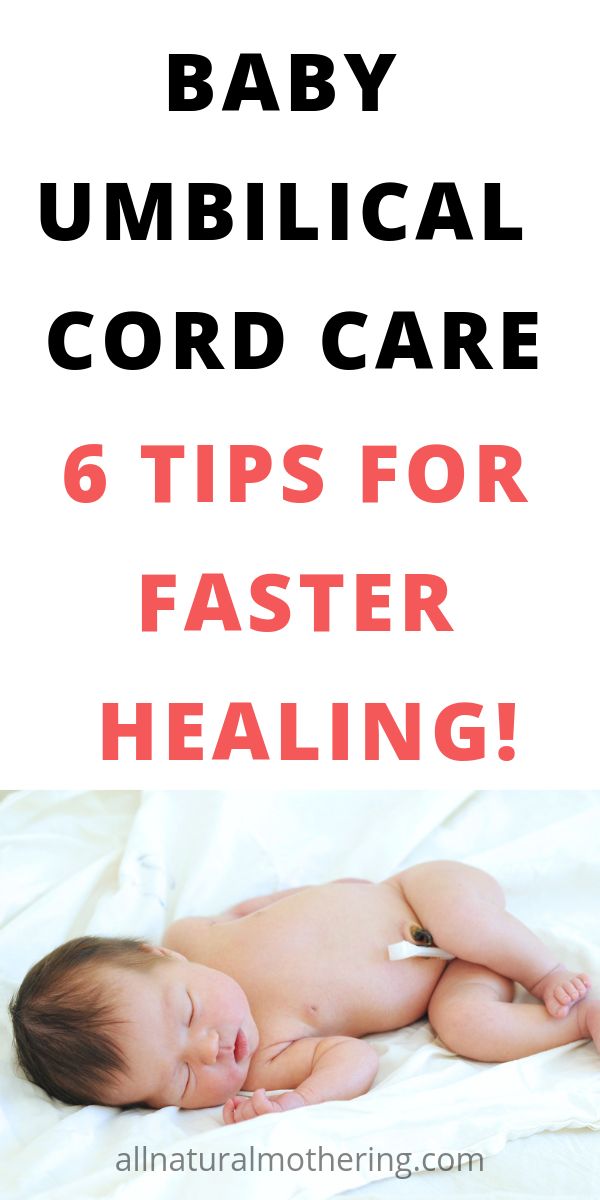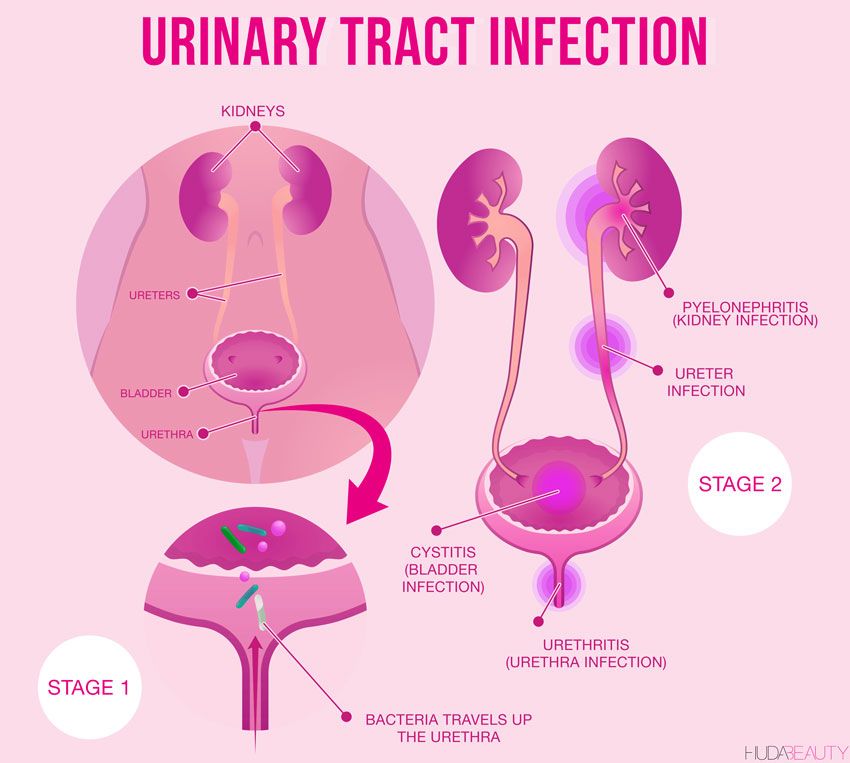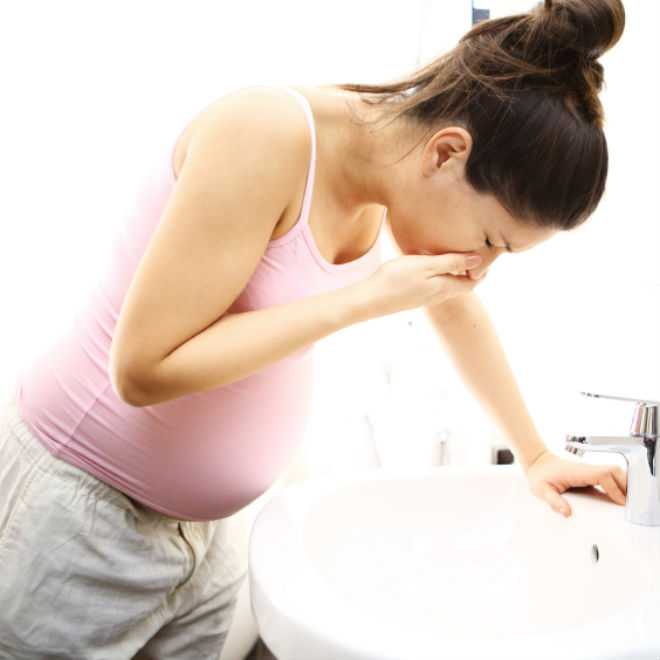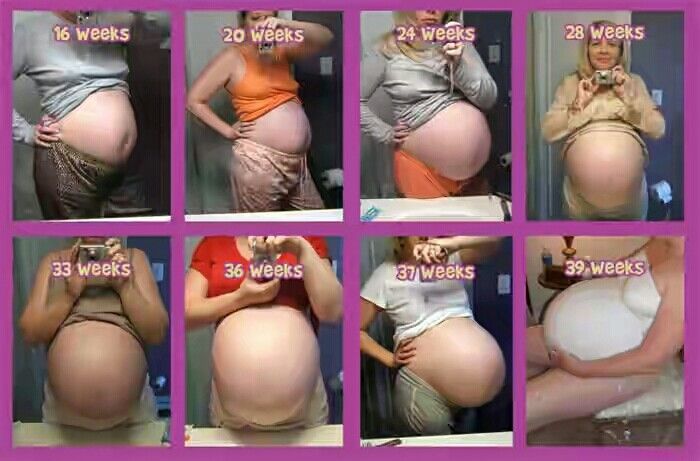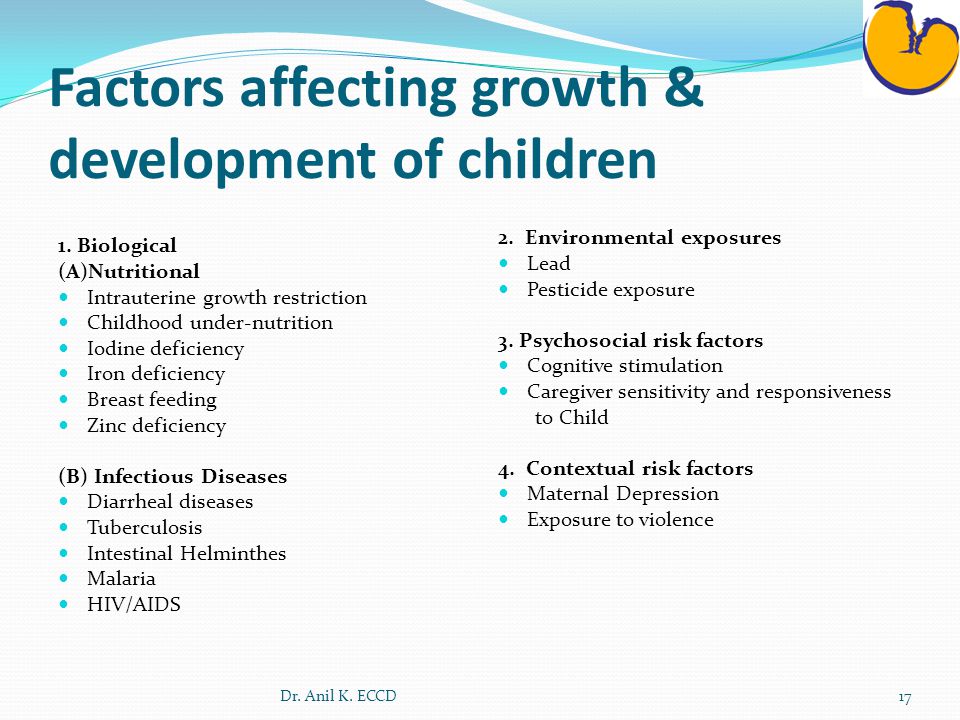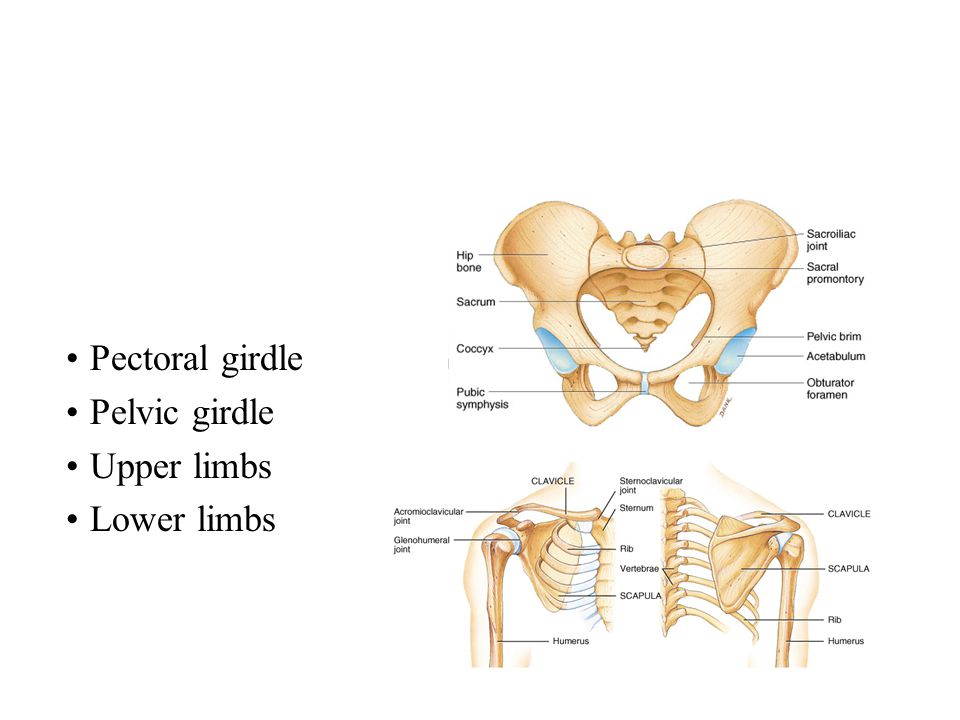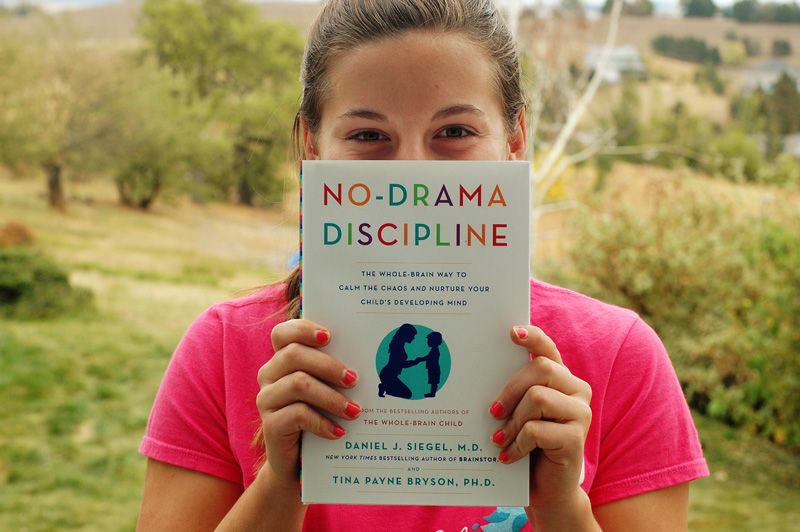How long after umbilical cord falls off does it heal
Newborn Umbilical Cord Care and Signs of Infection
As the parent of a newborn, you’ll want to know about umbilical cord care, including how to keep your baby’s umbilical cord stump dry until it falls off, how to identify the signs of infection, and when to call your healthcare provider. Read on to learn about all this, and more.
What Is the Umbilical Cord Stump and When Will It Fall Off?
The umbilical cord delivered nutrients and oxygen to your baby in the uterus. Soon after your baby is born the cord is clamped and cut. Your baby wouldn’t feel this as the umbilical cord has no nerves in it.
The clamp is usually kept in place for 24 to 48 hours. It is removed once what remains of the cord has dried and no longer bleeds.
Once the clamp is removed, what will remain on your little one’s belly is a little stump. As the umbilical cord stump dries, shrivels, and hardens, it will go from a yellow color to a brownish black.
The umbilical cord stump usually falls off within a few weeks of your baby’s birth. Contact your baby’s healthcare provider if it hasn't fallen off by the time your little one is 2 months old.
In some cases, there may be an underlying cause for the umbilical cord stump not falling off, such as an infection or an immune system disorder, which your provider will investigate.
After the stump falls off, the skin underneath should be healed. Sometimes, the skin may be a little raw, and a little fluid may seep out. Continue to keep your little one’s belly button dry and clean and it should soon heal completely. Contact your healthcare provider if it hasn’t healed within two weeks of the stump falling off.
How to Care for and Clean the Umbilical Cord Stump
The key is to keep the stump area clean and dry. It might be most convenient to clean your little one's stump when you change her diaper or when you bathe her.
Here are some umbilical cord care tips to follow:
Keep the umbilical cord stump clean and dry. Experts recommend “dry cord care,” which means allowing air to reach the cord stump and not covering it in water or ointments. You may have heard of dabbing rubbing alcohol on the stump, but nowadays experts tend to recommend just letting it be. Ask your healthcare provider for advice if you're not sure what to do.
Prevent irritation. Try to prevent your newborn's diapers from rubbing against the stump by folding the top of the diaper down under the cord stump, or choosing a disposable diaper with a cutout notch at the top. Pampers Swaddlers have this feature, for example.
Check for signs of infection. Clear liquid oozing from the stump, drops of blood, and scabbing can be normal, but if you notice any signs of an infected umbilical cord stump or if your baby has a fever, let your healthcare provider know right away.
Don't pick at the stump.
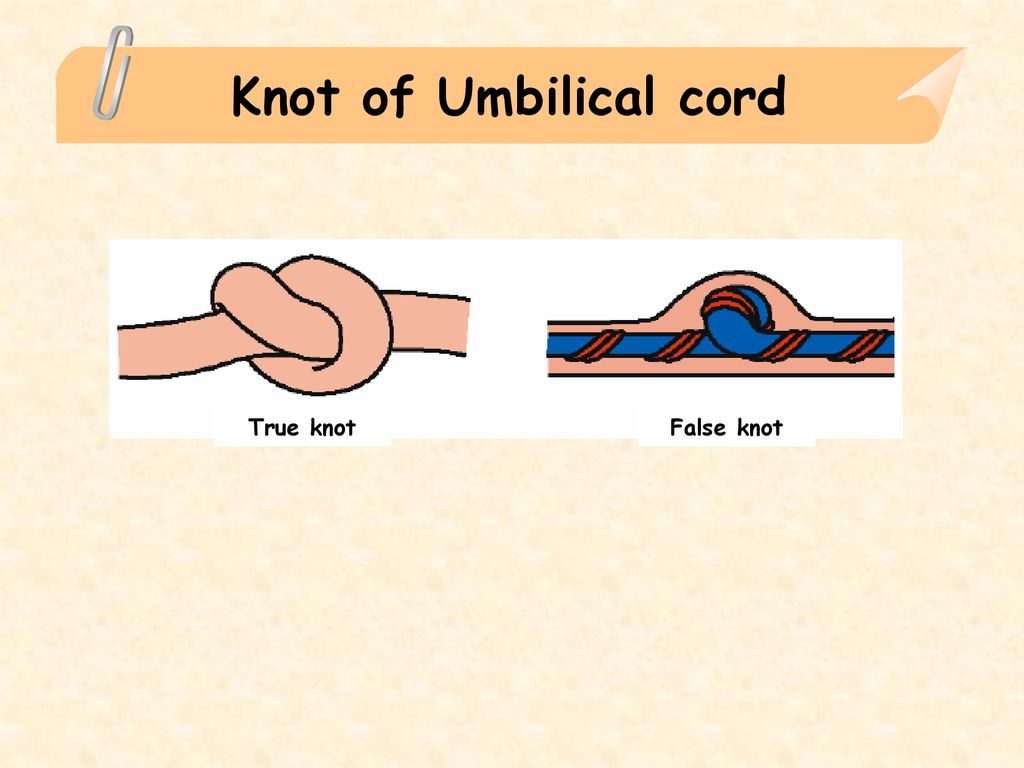 Let the umbilical cord stump fall off on its own rather than picking or pulling it, even if it's hanging off. It will fall off in due course.
Let the umbilical cord stump fall off on its own rather than picking or pulling it, even if it's hanging off. It will fall off in due course.Keep an eye out for bleeding. A few drops of blood when the stump falls off is normal. If it bleeds any more than this, contact your baby's healthcare provider.
Don't tape or cover the umbilical area with a coin. Contrary to what you may have heard, taping the navel area down or placing a coin on it won't help change the shape of your little one's belly button, and may actually cause damage. Reach out to your baby's healthcare provider if you're concerned about the shape of your baby's belly button or if you suspect your little one may have a condition like an umbilical hernia.
Bath Time and Umbilical Cord Care
Until the stump falls off and your baby's belly button heals, it's best to stick with sponge bathing so that you avoid soaking the stump in water.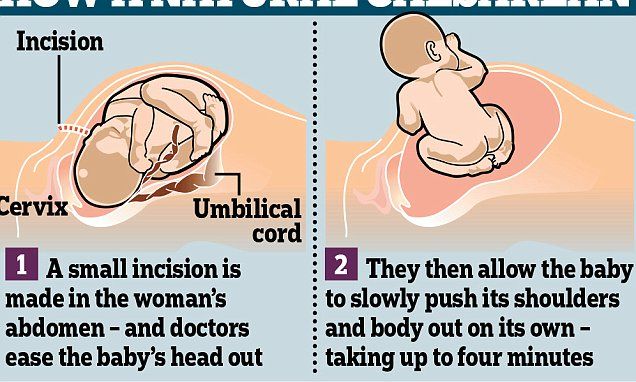 You don't need to sponge bathe your baby every day; two or three times a week is usually enough.
You don't need to sponge bathe your baby every day; two or three times a week is usually enough.
You may wish to use sponge bath time to gently clean the umbilical cord stump as well.
To give your little one a sponge bath, get everything ready that you'll need like
a bowl of warm water
a washcloth
baby soap
a wet cotton swab or cotton ball
towels
a fresh diaper
clothes.
Lay your baby down on a padded flat surface — like the changing pad on the changing table, or on the floor on a soft towel — with your supplies within reach. Never leave your baby unattended during the sponge bath; if she's on a raised surface, such as the changing table, keep the safety strap fastened and a hand on her at all times.
Keep your little one covered in a towel so she doesn't become chilled, exposing only the parts of the body that are being washed. Start with her face, using the damp washcloth but no soap so that you don't get soap in her eyes. Then add soap to the water and continue to gently clean the rest of her body, especially the folds of her skin around her neck, ears, and genital area.
Then add soap to the water and continue to gently clean the rest of her body, especially the folds of her skin around her neck, ears, and genital area.
For the umbilical cord stump area, follow the umbilical cord care tips listed above. You may wish to use a wet cotton ball or a swab to clean the skin around the stump area, being careful not to get the stump itself wet.
Once the cord has fallen off, feel free to bathe your baby in a baby bathtub or in the sink.
Changing Your Baby’s Diaper and Protecting the Umbilical Cord Stump
You can read about how to change a diaper here, but keep in mind that in these first few weeks you’ll need to be extra careful to protect the umbilical cord stump area.
If the cord stump hasn’t fallen off yet, use notch-cutout diapers or fold down the top of the diaper to prevent urine from reaching the stump and to prevent the diaper itself from irritating the stump.
For the umbilical cord stump area, follow the umbilical cord care tips listed above. You may wish to use a wet cotton ball or a swab to clean the skin around the stump area, being careful not to get the stump itself wet.
You may wish to use a wet cotton ball or a swab to clean the skin around the stump area, being careful not to get the stump itself wet.
Signs of an Infected Umbilical Cord Stump
It’s unlikely your baby’s umbilical cord stump will become infected, but if you notice any of these signs of an infected umbilical cord, contact your baby’s healthcare provider.
These are some of the signs of an infected umbilical cord:
A smelly yellow discharge from the stump area
A reddening of the skin around the stump
Swelling of the navel area
Your baby crying when you touch the stump, indicating it is tender or sore.
It’s normal to see crusted discharge, dried blood, or a little bleeding when the umbilical cord stump falls off. Bleeding is not necessarily a sign that your newborn’s belly button is infected, but if your baby’s umbilical cord area continues to bleed ask your child’s healthcare provider for advice.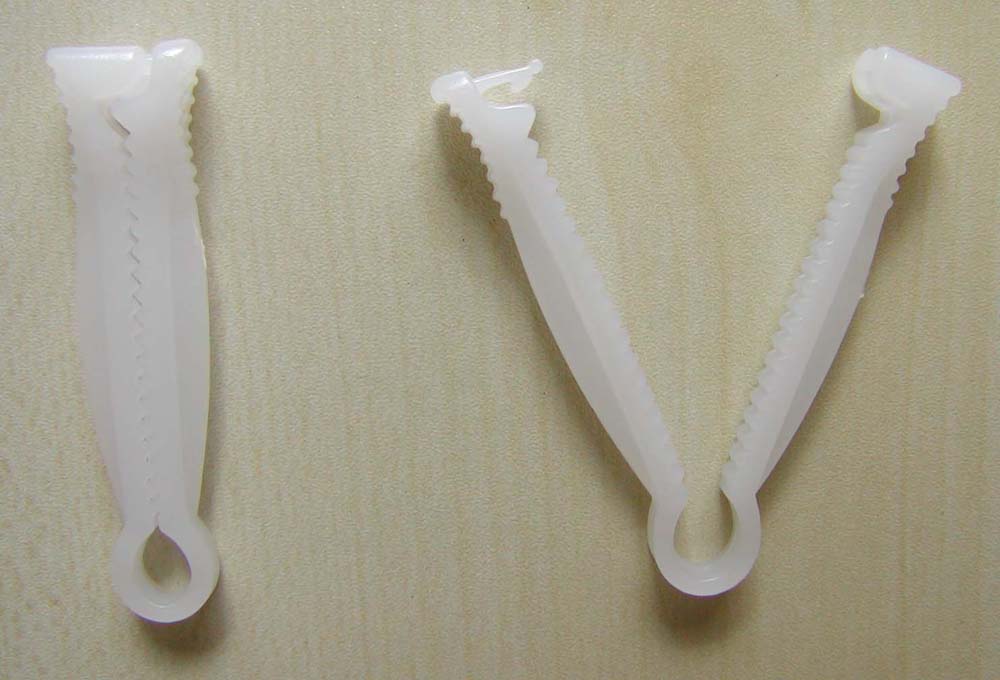
Read more about baby skin care so that you can help keep your little one’s soft skin healthy and clean.
Umbilical Cord Conditions
These are two conditions associated with the umbilical cord or navel area. Chat with your healthcare provider if you think your baby may have either of these:
Umbilical granuloma. After the cord falls off, you may notice a reddish moist lump or nodule near where the cord fell off that may get slightly larger and continue to ooze slightly. This is likely go away after about a week or so, but if not your baby’s healthcare provider may remove it.
Umbilical hernia. If you notice that your baby’s belly button bulges out when he cries, he could have an umbilical hernia. This is a little hole in the abdominal wall that allows tissue to bulge out when there is pressure, such as when your little one cries. An umbilical hernia will typically heal when your child is between 12 months old and 18 months old.
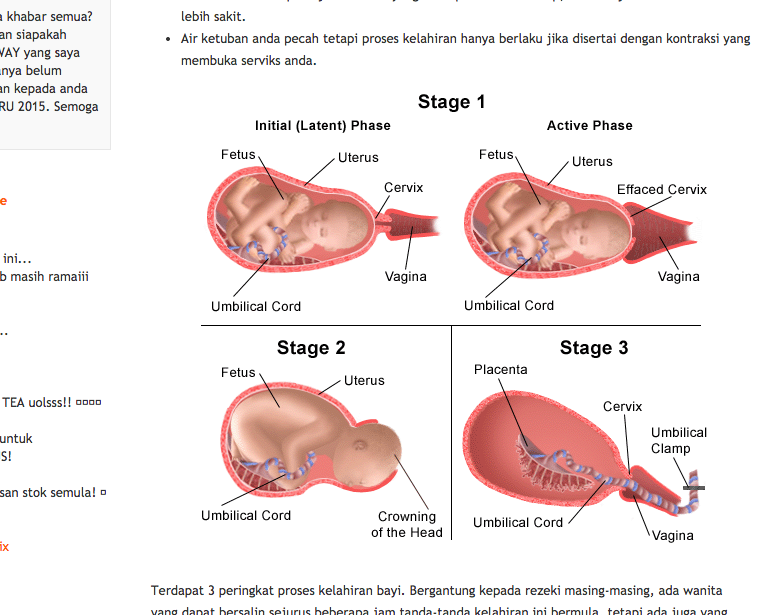
The Bottom Line
Within a few weeks after your baby is born, what remains of the umbilical cord will fall off to reveal your baby’s cute little belly button. It’s a reminder of how far your little one’s come in just a short time.
As you go about carefully changing your newborn’s diapers, know that you could be getting gifts and discounts for all that you’re doing. Download the Pampers Club app to get started.
Umbilical Cord Symptoms
Is this your child's symptom?
- Umbilical cord or navel questions about newborns
- The navel is also called the belly button or umbilicus
Symptoms
- Umbilicus (navel) has a cloudy discharge or even some dried pus on the surface
- Bleeding occurs from cord's point of separation
- Separation of cord is delayed past 3 weeks
Omphalitis: Serious Complication
- Definition. Bacterial infection of the umbilical stump with spread to the skin around it.
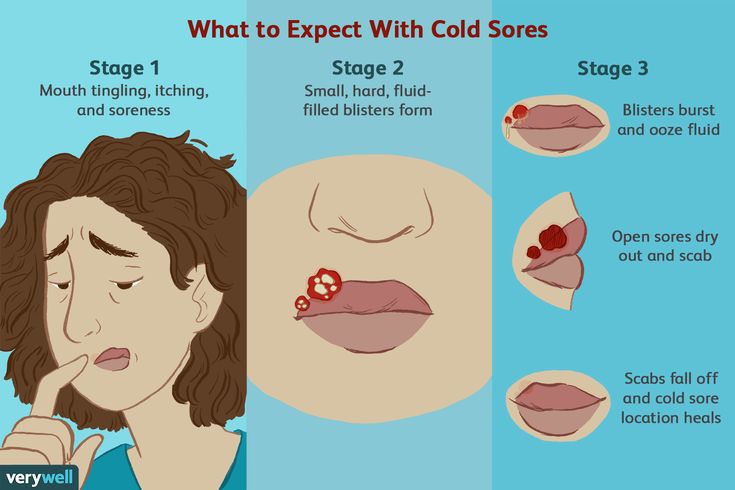 It's a medical emergency.
It's a medical emergency. - How Often. 1 out of 200 newborns.
- Symptoms. Redness spreads around the navel. The area may be tender, swollen and have a foul odor.
Umbilical Granuloma: Minor Complication
- Definition. Small round growth in center of navel after the cord falls off. It's red. Covered with clear mucus. Not dry like normal skin.
- How Often. 1 out of 500 newborns.
- Outcome. Usually grows in size if not treated. Can become an entry point for umbilical infections.
- Treatment. Easily treated in the doctor's office by putting on a chemical called silver nitrate.
Dry Cord Care or Alcohol Cord Care
- The AAP and ACOG both advise dry cord care (natural drying). (Guidelines for Perinatal Care, 2012). It has become common practice in US hospitals.
- The book advises against using alcohol for routine umbilical cord care.
- Alcohol cord care is advised in less developed countries with high infection rates.

When to Call for Umbilical Cord Symptoms
Call Doctor or Seek Care Now
- Age less than 1 month old and looks or acts abnormal in any way
- Bleeding won't stop after 10 minutes of direct pressure applied twice
- Spot of blood more than 2 inches (5 cm) across
- Red streak runs from the navel
- Red skin spreads from around the navel
- Fever in baby less than 12 weeks old. Caution: do NOT give your baby any fever medicine before being seen.
- You think your child needs to be seen, and the problem is urgent
Contact Doctor Within 24 Hours
- Small bleeding lasts more than 3 days
- Pimples, blisters or sores near navel
- Lots of drainage (such as urine, mucus, pus) from the navel
- You think your child needs to be seen, but the problem is not urgent
Contact Doctor During Office Hours
- After using care advice for 3 days, navel is not dry and clean
- Small piece of red tissue inside the navel
- Cord stays attached more than 6 weeks
- You have other questions or concerns
Self Care at Home
- Normal cord care
- Normal navel care after cord falls off
- Minor infection of cord or navel
- Normal bleeding from cord or navel
- Normal delayed separation of the cord after 3 weeks
Seattle Children's Urgent Care Locations
If your child’s illness or injury is life-threatening, call 911.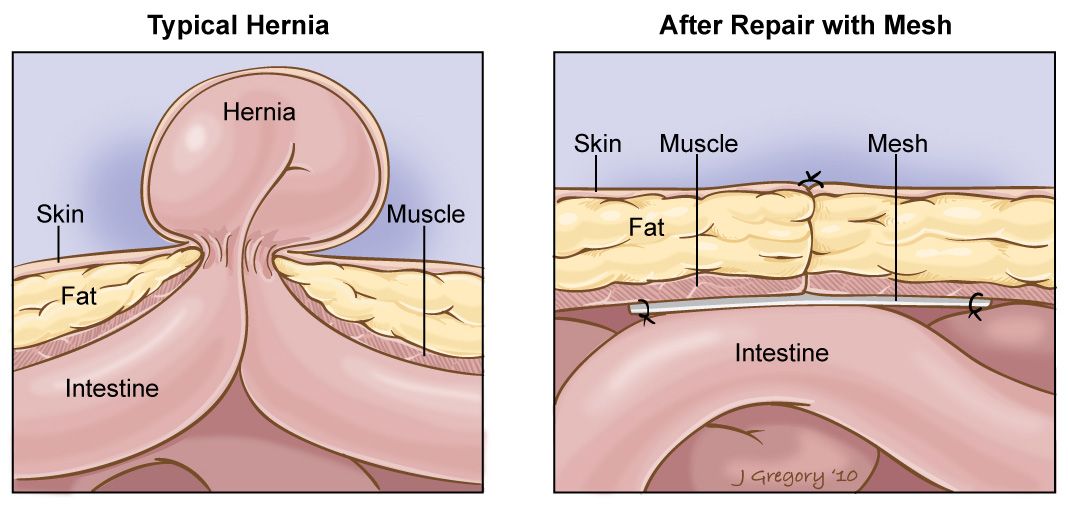
- Bellevue
- Everett
- Federal Way
- Seattle
Care Advice
Treatment for Normal Umbilical Cord
- What You Should Know About Normal Umbilical Cords:
- Normal cords don't need any special treatment.
- Just keep them dry (called dry cord care or natural drying).
- Reason: Cords need to dry up, before they will fall off.
- As they dry up, cords normally change color. They go from a shiny yellowish hue, to brown or gray.

- The cord will normally fall off between 1 and 3 weeks.
- Here is some care advice that should help.
- Normal Dry Cord Care:
- Check the skin around the base of the cord once a day.
- Usually the area is dry and clean. No treatment is needed.
- If there are any secretions, clean them away. Use a wet cotton swab. Then dry carefully.
- You will need to push down on the skin around the cord to get at this area. You may also need to bend the cord a little to get underneath it.
- Caution: Don't put alcohol or other germ killer on the cord. Reason: Dry cords fall off sooner. (Exception: instructed by your doctor to use alcohol).
- Bathing:
- Keep the cord dry. Avoid tub baths.
- Use sponge baths until the cord falls off.
- Fold Diaper Down:
- Keep the area dry to help healing.
- To provide air contact, keep the diaper folded down below the cord.

- Another option for disposable diapers is to cut off a wedge with a scissors. Then seal the edge with tape.
- Poop on Cord:
- Getting some poop on the cord or navel is not serious.
- If it occurs, clean the area with soap and water.
- This should prevent any infections.
- Call Your Doctor If:
- Develops a red streak or redness around belly button
- Fever occurs
- Your baby starts to look or act abnormal
- You think your child needs to be seen
Treatment for Normal Navel After Cord Falls Off
- What You Should Know About Navels After the Cord Falls Off:
- The cord can't fall off too early.
- The average cord falls off between 10 and 14 days. Normal range is 7 to 21 days. Even if it falls off before 7 days, you can follow this advice.
- After the cord has fallen off, the navel will gradually heal.
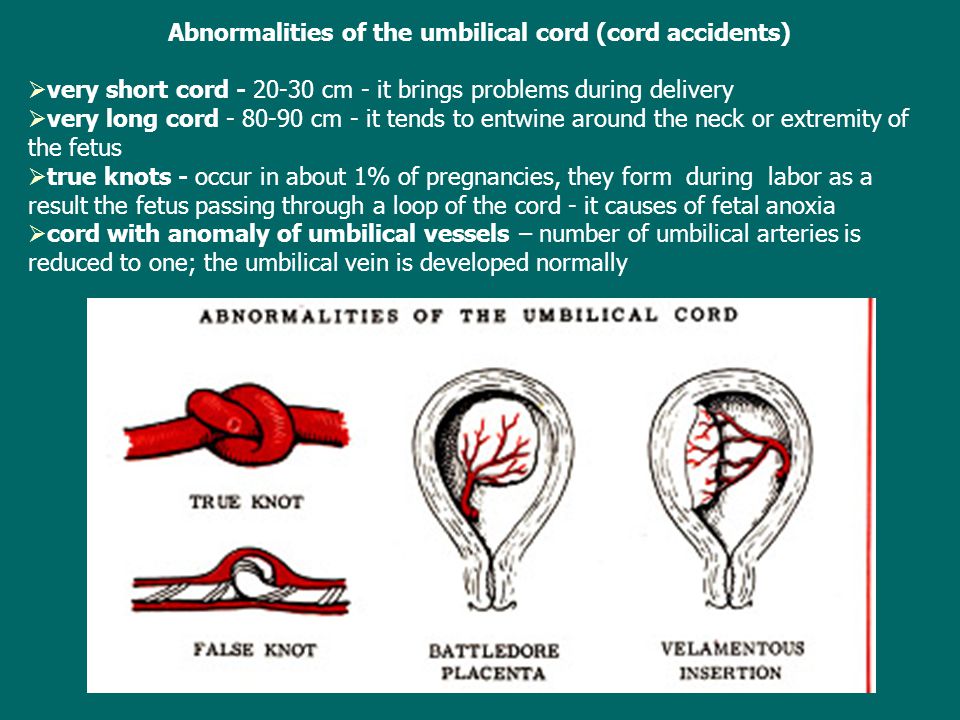
- It's normal for the center to look red at the point of separation.
- It's not normal if the redness spreads on to the belly.
- It's normal for the navel to ooze some secretions.
- Sometimes the navel forms a scab. Let it heal up and fall off on its own.
- The navel has a small risk of becoming infected.
- Here is some care advice that should help.
- Normal Navel Care:
- Keep the navel (belly button) clean and dry.
- If there are any secretions, clean them away. Use a wet cotton swab. Then dry carefully.
- Do this gently to prevent any bleeding.
- Caution: Don't use any rubbing alcohol. Reason: can interfere with healing.
- Bathing:
- After the cord falls off, continue sponge baths for a few more days.
- Help the belly button area dry up.
- Then, tub baths will be fine.
- Fold Diaper Down:
- Keep the navel dry to help healing.
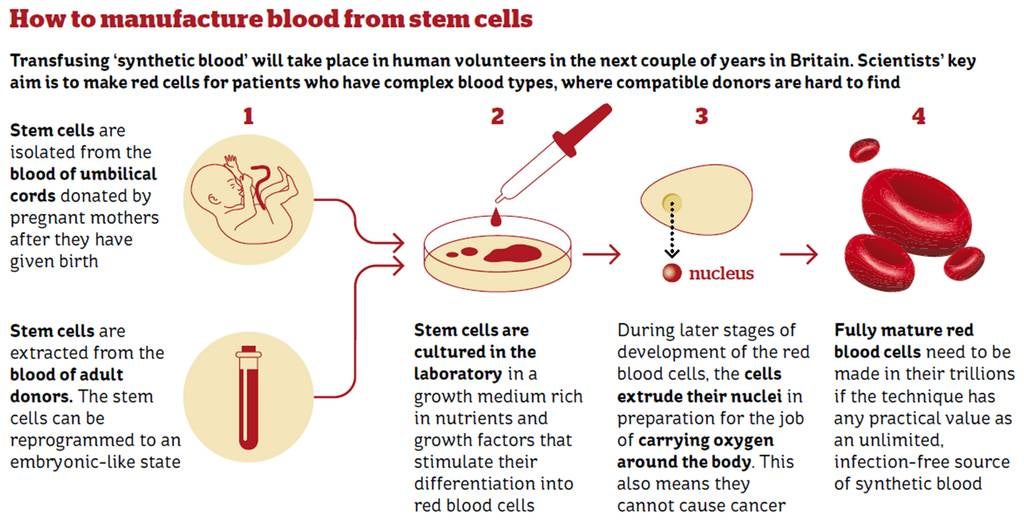
- To provide air contact, keep the diaper folded down below the navel.
- Keep the navel dry to help healing.
What to Expect: The belly button should be healed and dry by 7 days.
- Call Your Doctor If:
- Develops a red streak or redness around belly button
- Fever occurs
- Cloudy discharge occurs
- Your baby starts to look or act abnormal
- You think your child needs to be seen
Treatment for Minor Infection of Cord or Navel
- What You Should Know About a Minor Infection of Cord or Navel:
- The belly button will ooze secretions for several days.
- Normal secretions are clear or blood tinged mucus.
- A cloudy discharge is usually a mild infection.
- This can be from normal skin bacteria.
- A small amount of pus may be present.
- Here is some care advice that should help.
- Clean the Navel:
- Clean the navel (belly button) 2 times a day.

- Use a wet cotton swab or cloth.
- Clean away any dried secretions or pus.
- Do this gently to prevent any bleeding.
- Caution: Don't use any rubbing alcohol. Reason: Can interfere with healing.
- Clean the navel (belly button) 2 times a day.
- Antibiotic Ointment for Pus:
- If any pus is present, use an antibiotic ointment (such as Polysporin).
- No prescription is needed.
- Put a tiny amount on the belly button.
- Do this 2 times per day after the area has been cleaned.
- Do this for 2 days. After that, use the antibiotic ointment only if you see more pus.
- Bathing:
- Do not use tub baths until the cord falls off. The navel should be well healed.
- Fold Diaper Down:
- Keep the belly button dry to help healing.
- To provide air contact, keep the diaper folded down. Keep it below the cord and belly button.
- What to Expect:
- With treatment, the cloudy discharge and pus should be gone in 2 to 3 days.

- The navel should become dry and healed by 7 days.
- With treatment, the cloudy discharge and pus should be gone in 2 to 3 days.
- Call Your Doctor If:
- Develops a red streak or redness around the belly button
- Fever occurs
- Cloudy discharge not gone after 3 days of using this care advice
- Your baby starts to look or act abnormal
- You think your child needs to be seen
Treatment for Normal Bleeding Around Cord
- What You Should Know About Mild Bleeding Around the Cord:
- A few drops of blood are normal when the cord falls off or catches on something.
- The diaper rubbing against the belly button may make it start up again.
- Here is some care advice that should help.
- Bleeding:
- To stop bleeding, put direct pressure on the navel for 10 minutes. Use a clean cloth.
- Clean the area beforehand, rather than afterwards.
- Reason: This helps prevent bleeding from starting back up.

- Diaper:
- Prevent the diaper from rubbing on the belly button.
- Do this by folding the diaper down away from the belly button.
- You can also cut a wedge out of the diaper.
- What to Expect:
- The bleeding may come back a few times.
- It should only be a small smear of blood.
- The bleeding site should heal up by 2 days.
- Call Your Doctor If:
- Bleeding gets worse
- Few drops of blood lasts more than 3 days
- Your baby starts to look or act abnormal
- You think your child needs to be seen
Treatment for Normal Delayed Separation of the Cord Beyond 3 Weeks
- What You Should Know Cords Falling Off:
- Most cords fall off between 10 and 14 days. Normal range is 7 to 21 days.
- All cords slowly fall off on their own.
- Continue to be patient.
- Here is some care advice that should help.
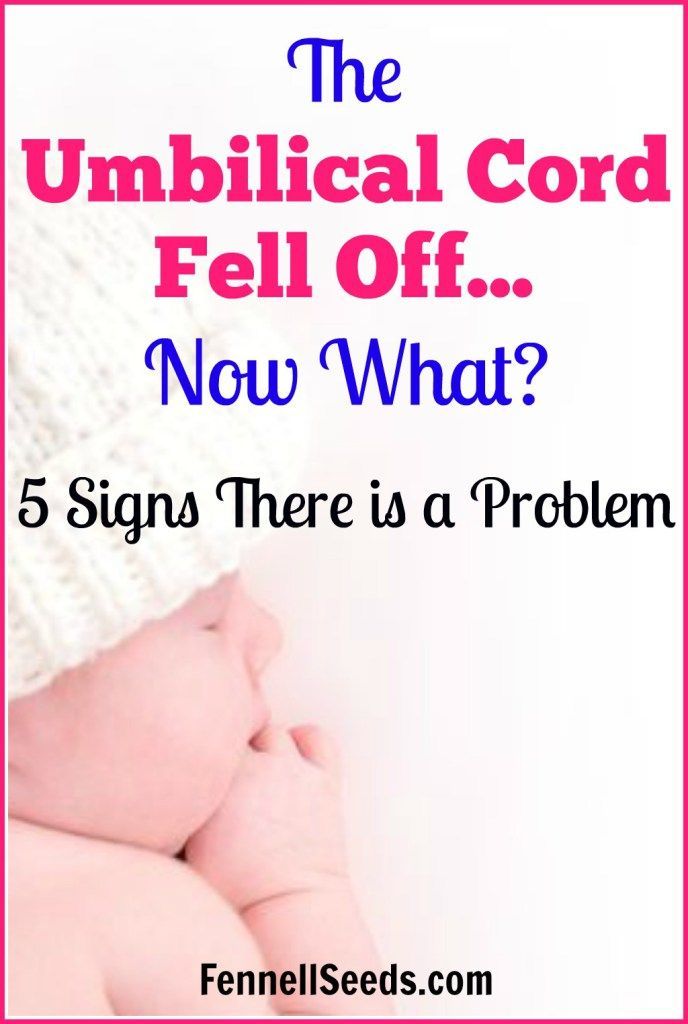
- Stop Alcohol:
- If you have been using rubbing alcohol to the cord, stop doing so.
- Rubbing alcohol can kill the good bacteria that help the cord fall off.
- Diaper:
- Help the cord dry up faster by keeping the diaper folded below it.
- Another approach is to cut out a wedge of the diaper (if disposable).
- Air contact helps the cord stay dry.
- Call Your Doctor If:
- Cord starts to look infected
- Fever occurs
- Cord is still on for more than 6 weeks
- Your baby starts to look sick or act abnormal
- You think your child needs to be seen
And remember, contact your doctor if your child develops any of the 'Call Your Doctor' symptoms.
Disclaimer: this health information is for educational purposes only. You, the reader, assume full responsibility for how you choose to use it.
Last Reviewed: 12/13/2022
Last Revised: 01/13/2022
Copyright 2000-2022.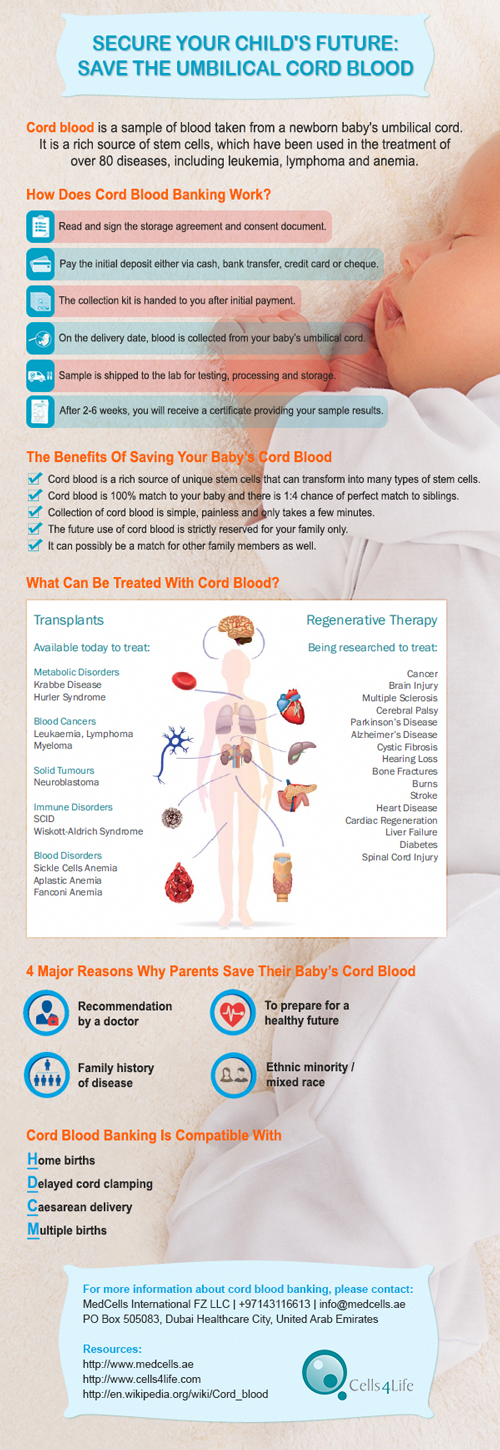 Schmitt Pediatric Guidelines LLC.
Schmitt Pediatric Guidelines LLC.
UMBILICAL WOUND IN NEWBORN
UMBILICAL WOUND IN NEWBORN
Primary treatment and ligation of the umbilical cord is performed even in the maternity hospital after the complete cessation of pulsation of its vessels, which usually occurs 2-3 minutes after the birth of the fetus. Before crossing the umbilical cord, it is wiped with alcohol and two sterile clamps are applied at a distance of 10 and 2 cm from the umbilical ring. The umbilical cord between the clamps is treated with 5% iodine solution and crossed with sterile scissors. The umbilical stump (residue) remains in this place, which dries up and falls off on its own naturally after a few days. The umbilical cord is cared for by a doctor.
There is no need to keep the baby in the hospital until the rest of the umbilical cord falls off. This is even reflected in Order N 345 of the Ministry of Health of the Russian Federation “On improving measures to prevent nosocomial infections in obstetric hospitals”: “From an epidemiological point of view, a course for early discharge (2-4 days after birth), including before the umbilical cord falls off, is justified. ”
”
However, in the history of the development of a newborn, one can often read "the umbilical cord fell off on the second day." In life, surgical removal is practiced - cutting off or unscrewing the umbilical cord residue after the newborn has two full days of life. This is due to the fact that not even all district pediatricians and patronage nurses are ready for a child with a bracket to come under their supervision, not to mention a young mother.
So, by the time of discharge from the hospital, as a rule, the umbilical cord is no longer there, but there is an umbilical wound, or rather, a scar (navel), which must be carefully looked after. This area must be kept clean and dry at all times. To reduce the risk of infection of the umbilical wound and in order to prevent purulent diseases of the navel and the development of umbilical sepsis (in which the infection enters the bloodstream, causing infection of the whole body), it is necessary to treat the umbilical wound twice a day (in the morning during the first swaddling and in the evening after bathing).
To do this, you will need sterile cotton swabs, 3% hydrogen peroxide solution, alcohol infusion of greenery (or 5% potassium permanganate solution or 5% iodine solution).
Wash your hands thoroughly before handling the navel. Grasp the skin around the navel with your thumb and forefinger and open the wound a little. Moisten a cotton swab or drip a few drops of a 3% hydrogen peroxide solution and treat the wound from the center to the outer edges, carefully removing the wound discharge, while the peroxide will foam. Dry (wetting movements) with a sterile cotton ball. After that, we treat the umbilical wound with an antiseptic solution: iodine or brilliant green, or potassium permanganate. It should be noted that a solution of brilliant green causes weeping, and a solution of potassium permanganate (potassium permanganate) dries. Therefore, it is better to treat the wound with potassium permanganate.
It is necessary to treat the umbilical wound until the navel heals and there are no crusts, serous or sanious secretions, and when treated with peroxide, foam is formed.
As a rule, the umbilical wound heals (epithelizes) by the end of the second week of life, at the same time there is a contraction of the skin umbilical ring.
By the age of 2 weeks, the child will be a normal navel, the shape of which, by the way, does not depend on the skill of the one who cuts the umbilical cord, but depends solely on the individuality of the child.
If the wound starts to become wet, discharge appears, and the surrounding skin turns red, it is quite possible that an infection has got into it - in this case, call a doctor immediately!
A few tips:
Bathe the baby until the umbilical wound has healed in water with the addition of a weak solution of potassium permanganate.
Before each dressing, leave the umbilical wound open so that there is air access - this way it is easier to keep it dry.
Do not put a patch on the umbilical wound, as the baby's skin does not breathe through it and this may cause skin irritation.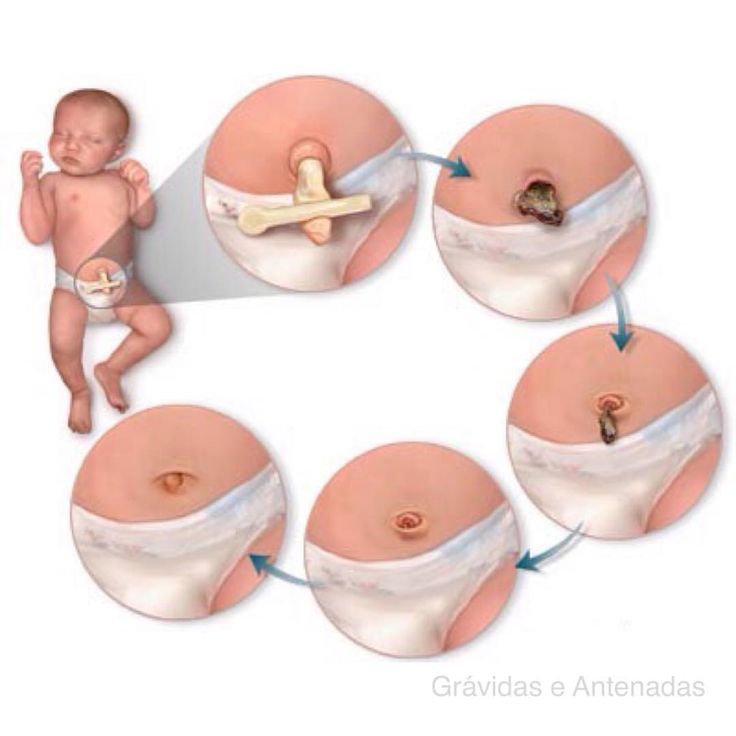
It is possible to use disposable diapers with a special cutout for the navel, so the edges of the diaper will not touch the umbilical wound to avoid chafing, and the top layer closes the cutout and protects this place from moisture and infections
treatment, how long it takes to heal, why it bleeds
What such an umbilical wound in a newborn
For the uninformed: an umbilical wound, despite the etymology, is not some kind of injury that can be avoided - all parents of newborn children have to deal with it.
What is it and how is it formed?
- The umbilical wound in newborns is formed as a result of the fall of the umbilical cord, - explains pediatrician, neonatologist Maria Makarshina .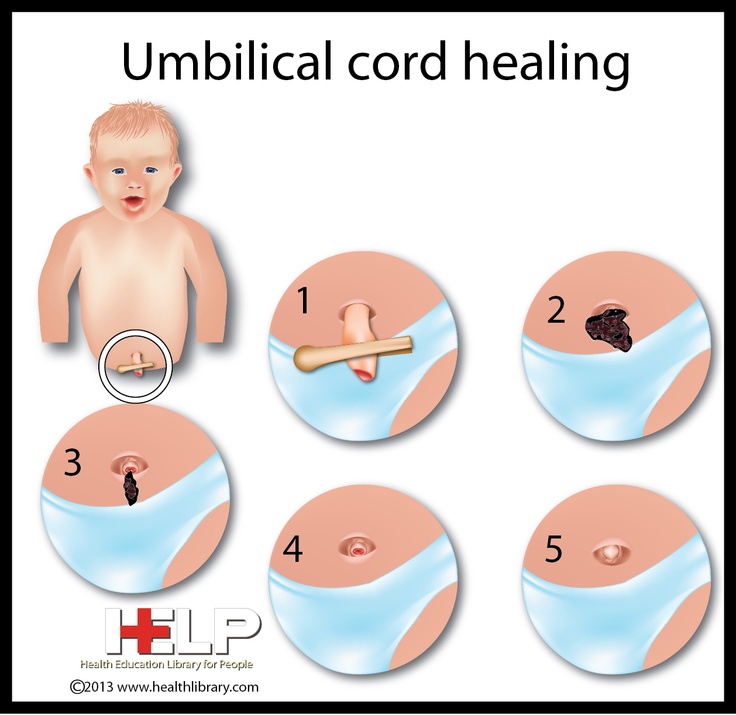 - Shortly after the baby is born, the umbilical cord, which connects the mother and the fetus in the womb, is cut because it is no longer needed. The child has an umbilical residue - a part of the umbilical cord, on which a plastic "clothespin" is applied. As blood flow through the umbilical cord stops, the vessels become empty, and the umbilical cord dries up and falls off. As a result, an umbilical wound is formed - the place where the vessels of the umbilical cord entered the body of the child.
- Shortly after the baby is born, the umbilical cord, which connects the mother and the fetus in the womb, is cut because it is no longer needed. The child has an umbilical residue - a part of the umbilical cord, on which a plastic "clothespin" is applied. As blood flow through the umbilical cord stops, the vessels become empty, and the umbilical cord dries up and falls off. As a result, an umbilical wound is formed - the place where the vessels of the umbilical cord entered the body of the child.
Treatment of an umbilical wound in a newborn
If there is a wound on the body (even an umbilical wound), it is logical that some kind of care must be provided. How to treat an umbilical wound in a newborn - and is it necessary at all?
— At the moment, in developed countries, it is customary to conduct an umbilical wound in a “dry way”. It has been proven that when a child is born in a maternity hospital in compliance with asepsis rules, which is routine for developed countries, additional treatment of the umbilical cord and umbilical wound is not required, says Dr.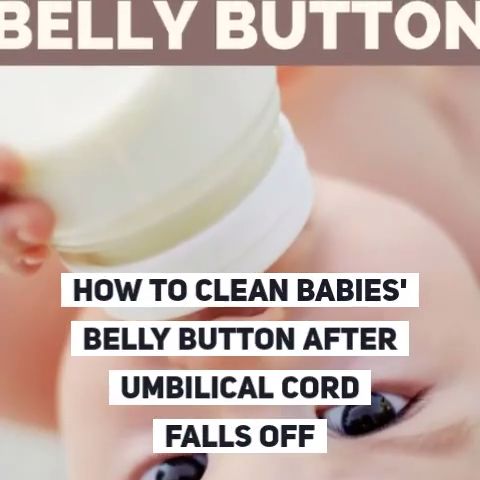 Makarshina. - Moreover, the use of antiseptics, alcohol solutions, hydrogen peroxide delays the fall of the umbilical cord residue and further healing of the umbilical wound.
Makarshina. - Moreover, the use of antiseptics, alcohol solutions, hydrogen peroxide delays the fall of the umbilical cord residue and further healing of the umbilical wound.
What is proper care? Or is it enough just not to touch the umbilical wound once again?
- For good healing, skin-to-skin contact immediately after birth is important, to avoid trauma to the umbilical cord, in particular, with the edge of the diaper, to keep the umbilical cord dry, lists the pediatrician. - To do this, sometimes I recommend not to bathe the child in the bath until the umbilical cord has fallen off, and if we do bathe, then we need to dry it thoroughly. The umbilical wound must also be thoroughly dried after bathing. And do nothing.
Healing time for an umbilical wound in a newborn
Of course, every parent is concerned about the question: how quickly does an umbilical wound heal in a newborn? Do not guard her for a month?
In fact, everything is individual.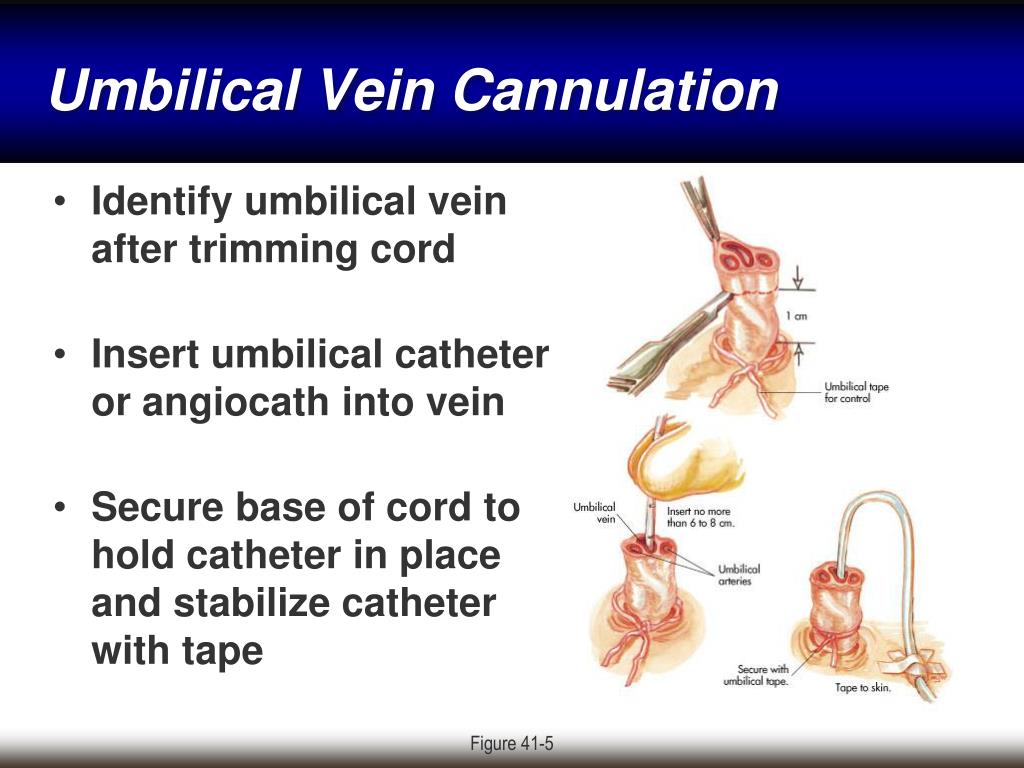 And first you need to separate the umbilical cord residue.
And first you need to separate the umbilical cord residue.
- The separation of the umbilical cord usually occurs during the first week of life, - notes Maria Makarshina. - A delay of up to three weeks is acceptable, provided there are no signs of infection, but lengthening the time for more than two weeks requires the attention of a doctor. And the umbilical wound usually heals 7-10 days after the umbilical cord falls off.
Frequently Asked Questions
What problems might arise? How to prevent this?
The most common problem is prolonged wetting of the umbilical wound. This is most often due to antiseptics and hydrogen peroxide, which are recommended for use in processing. The fall off of the umbilical cord and the healing of the umbilical wound largely depend on the microflora that the child receives from the mother, which is why skin-to-skin contact after birth is so important. In addition, the settlement of the child's skin with maternal flora occurs during breastfeeding, while caring for the baby.